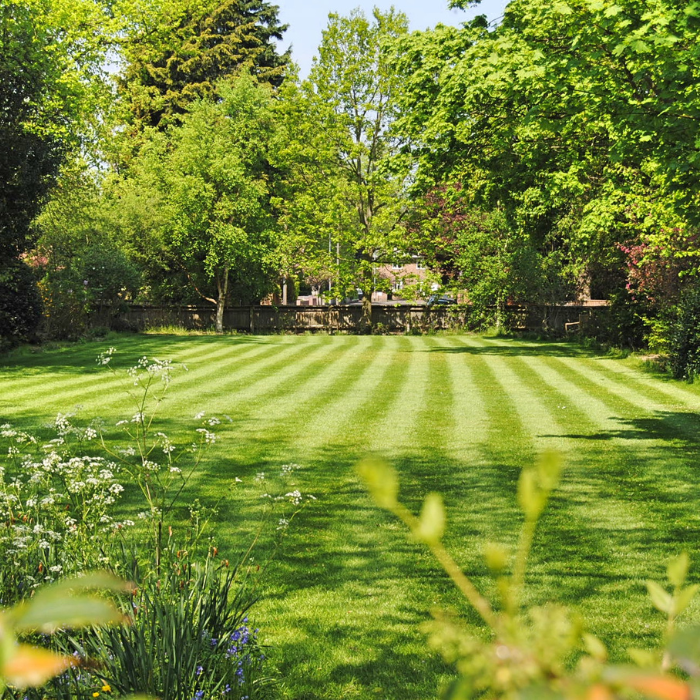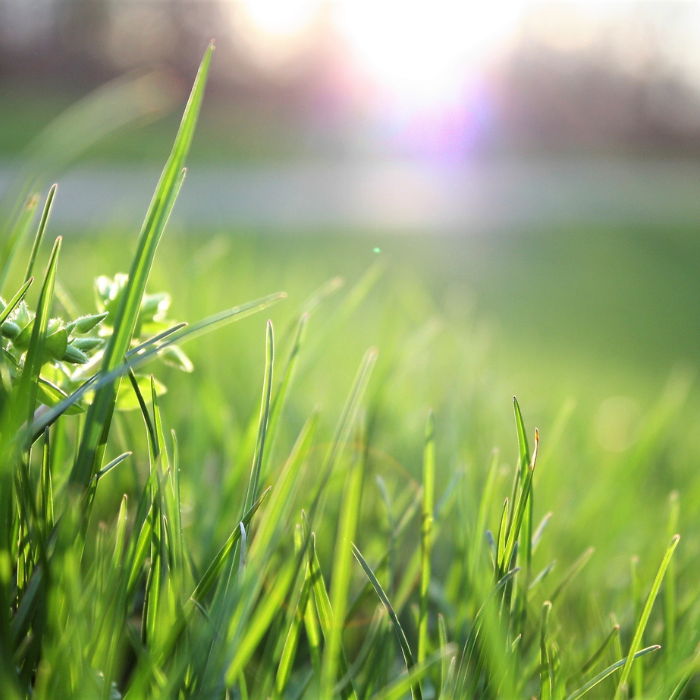#Collaborative post
When hot spells arrive, a lawn can quickly lose its lustre and strength. The ground dries, blades yellow, and the once-springy surface begins to feel brittle. With care, though, it’s possible to shield your turf and keep its green vitality alive.
So let’s walk through thoughtful ways to guard your lawn against summer extremes, using methods that are practical, sustainable, and quietly reassuring.
Know and Nurture Your Grass Type
Every lawn begins with its grass. Before tackling summer care, it’s worth pausing to notice what you already have beneath your feet.
Run a hand over the blades, observe their density, and see how they spread. These clues tell you whether you’re tending fescues, ryegrass, or perhaps heat-tolerant varieties such as Bermuda or Zoysia.
Choosing the right type makes the difference between a lawn that wilts and one that weathers the heat. In southern counties where temperatures climb, resilient grasses cope far better than cool-season blends.
Local experts or gardening centres can confirm the best matches for your soil and region, ensuring your choices last for years rather than seasons.
Understanding your grass also teaches you how it signals stress. Some blades curl, others fade in colour, and spotting these early signs means you can act before lasting harm sets in.
With this foundation, you’re ready to consider how to best water your lawn during demanding summer weeks.

Water with Care and Rhythm
During a heatwave, water is one of the most important elements. However, it’s crucial to consider timing and technique in addition to quantity.
Early mornings, when the air is still cool, let droplets soak deep rather than vanishing on the breeze. Late evenings can work too, provided the ground dries before nightfall to avoid fungal troubles.
Aim for a thorough soak once or twice a week rather than a daily sprinkle. Around 25 millimetres per session is enough to reach the roots and encourage them to grow stronger.
Soaker hoses or rotary sprinklers help spread water evenly, reducing waste and keeping bills in check.
Furthermore, automatic systems with timers can save effort, but always adjust for rainfall. There’s no sense watering what nature has already provided. Balance is key, as too much invites disease, and too little weakens the turf.
By treating water as both a necessity and a precious resource, you give your lawn the best chance to endure long dry spells. And once the roots are refreshed, attention turns naturally to how you cut and manage the grass above.
Mow with Height and Patience
Cutting grass may seem routine, yet in the summer, it becomes a matter of strategy.
Taller blades shield the soil from direct sun, helping it hold moisture and stay cool. Letting fescues stand at 9 to 10 centimetres and Bermudas closer to 5 or 6 keeps roots shaded and stress levels down.
Moreover, leave the clippings where they fall whenever possible. This simple act, often called grasscycling, allows them to decompose and release nutrients, acting much like a natural mulch.
The soil benefits, the lawn looks cared for, and you spend less time emptying collection bins.
Regular maintenance of your mower is just as vital. Sharp blades cut cleanly without tearing, reducing the risk of brown tips.
And though it can be tempting to give the lawn a short trim before holidays, resist the urge. Short cuts scorch quickly under the summer sun, leaving patches that recover slowly.
Having managed mowing carefully, the next step is to ensure the soil beneath can breathe freely.
Breathe Life Through Aeration
Compacted soil is a common foe in summer.
Foot traffic, children’s games, and garden gatherings all press the surface flat, starving roots of air. Aeration loosens this grip, opening channels for water and nutrients to flow freely once more.
On small lawns, a simple hand tool does the job, while larger spaces benefit from motorised aerators.
Choose a cooler part of the day to reduce stress, ideally in late spring or early autumn, yet don’t shy from giving relief during a heatwave if the ground feels hard.
The results are immediate. Water seeps deeper, roots stretch further, and growth resumes with renewed strength.
Aeration is like taking a deep breath, easing tension and giving the lawn resilience when conditions are harshest. With breathing space restored, it becomes easier to combine surface protection methods such as mulch and shade.

Use Mulch and Shade to Your Advantage
Mulching works quietly, spreading a protective layer that locks in moisture and slows down evaporation.
Wood chips, bark, or compost placed around edges and beds keep soil cool, discourage weeds, and gradually enrich the earth as they break down.
Shade, too, is a gift in fierce weather. Mature trees such as oak or maple create calm oases, while pergolas or fabric sails provide shelter in younger gardens.
Even temporary coverings during the hottest hours can make a marked difference. These measures protect not only the grass but also the people who gather outdoors.
Together, mulching and shading blend practicality with beauty. A shaded patch of lawn feels welcoming on a sultry afternoon, and mulch softens the look of borders while working tirelessly beneath the surface.
As the surface is cooled and shielded, the final piece of summer resilience comes from feeding and protection against pests.
Feed Gently and Guard Against Pests
Fertilising during the summer is best done with subtlety.
A slow-release or organic feed trickles nutrients into the soil without overwhelming it. To ensure that nutrients are delivered directly to the roots, apply sparingly during the cooler hours of the day, preferably prior to watering.
Overfeeding drives growth, which in turn requires more water—exactly what the season doesn’t have.
At the same time, remain vigilant for any unwanted guests. Armyworms, chafer grubs, and chinch bugs can weaken turf just when it struggles most. Encourage natural allies such as ladybirds or lacewings, and use gentle treatments like neem oil where needed.
A strong, well-fed lawn resists pests better than one undernourished, reducing the need for stronger chemicals.
For households that prefer professional support, lawn care services provide seasonal packages that often include feeding, pest monitoring, tailored watering plans, and grass mowing.
Prices vary, yet for many, weighing up the cost against the time and effort saved makes the choice straightforward.
Whether you handle tasks yourself or call in help, prevention always beats cure, leaving you ready to enjoy a lawn that remains healthy and alive.
Conclusion
Strong lawns are shaped by steady, thoughtful routines rather than quick fixes.
With water applied wisely, nutrients delivered gently, and soil kept open to breathe, turf can withstand even the fiercest summer heat.
The reward is a calm, green space that endures gracefully from the first hot spell to the last days of the season.



